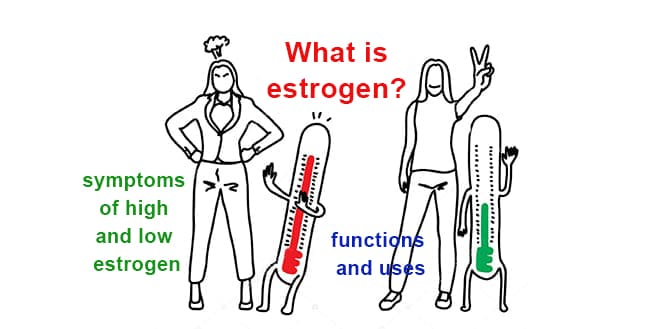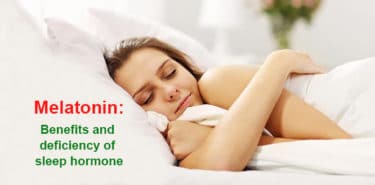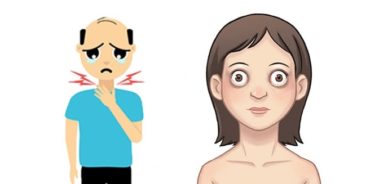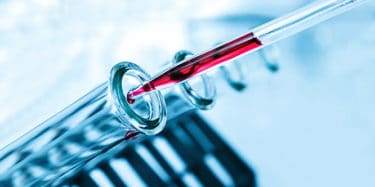Estrogen is an important hormone that responsible for the development and regulation of the female reproductive system. It has an important role in formation of feminine body structure, pubic and armpit hair growth, development of breast and regulation of menstrual cycle. Many health problems can arise due to lack of estrogen, which has many effects on sexual life, pregnancy, birth and menopause.
Table of Contents
What is estrogen?
Estrogen (female hormone) is one of the two main hormones women have. It is the main hormone responsible for the formation of women’s physical characteristics and reproduction. It is also found in men, but the amount is very low. The estrogen released from the ovaries is also released from adrenal glands and adipose tissue in small amounts. The hormone that passes through the blood transmits messages to various tissues and cells in the body.
It mediates the initiation of sexual development. Female hormone that works with progesterone hormone regulates the menstrual cycle. Provides the formation and continuity of reproductive functions. In puberty, the ovaries secrete estrogen in parallel with the menstrual cycle. Its level increases suddenly during an ovum release cycle. After ovulation, levels decrease sharply.
What does estrogen do?
- Ovaries: stimulates growth of ovum follicles
- Vagina: Causes vaginal enlargement and real size, thickening of vaginal wall, an increase in vaginal acidity that reduces bacterial infections. It helps lubricate vagina
- Fallopian Tubes: Estrogen is responsible for the growth of a thick, muscular wall in fallopian tubes, and for contractions that transport egg and sperm cells.
- Uterus: Estrogen enhances and maintains the mucous membrane that lines uterus. It increases size of the endometrium as well as enhancing blood flow, protein content, and enzyme activity. It also stimulates the muscles in uterus to develop and contract. Contractions help during the delivery of an infant and placenta, and they assist wall of the uterus in getting rid of dead tissue during menstruation.
- Cervix: Estrogen is thought to regulate flow and thickness of uterine mucous secretions. This helps the sperm cell to move towards the egg cell.
- Breast: Helps grow the breasts during puberty, to get the nipple’s unique color and to stop the flow of milk during the period of breastfeeding.
- Other Duties: Allows excretion of dead tissue on uterus during menstrual period, keeps the cholesterol level under control, protects the bone and mental health, has a regulatory effect on the tasks of the skin and many other tissues.

What is Estrogen Test?
Estrogen testing measures the level of female hormones in blood or urine. Blood is usually taken for testing. Sometimes 24-hour urine can be collected and tested. There are three types of estrogen hormone measured by this test:
- Estron (E1): It is a medium-strong female hormone type and is present in post-menopausal period in women. It is found in fat and muscle tissue but it is found in many tissues of the body. Body can convert estron to estradiol and estradiol to estron.
- Estradiol (E2): It is the strongest female hormone. Estradiol is the main estrogen hormone. Produced in ovaries. It is thought to play a role in the formation of endometriosis, myoma, endometrial cancer and other female cancers.
- Estriol (E3): It is the weakest female hormone. It is waste product after use of estradiol. Pregnancy is only time that a significant amount of estriol is made. Estriol cannot be converted to estradiol and estrone.
Normal estrogen level in women
| Estron (E1) | Estradiol (E2) | |
| Pre-puberty | uncertain – 29 pg / mL | uncertain – 20 pg / ml |
| Adult | 10–200 pg / mL | uncertain – 350 pg / ml |
| Premenopause (before menopause) | 17–200 pg / mL | 15-350 pg / ml |
| Postmenopause (after menopause) | 7–40 pg / mL | <10 pg / ml |
Normal estrogen level in men
| Estron (E1) | Estradiol (E2) | |
| Pre-puberty | uncertain– 16 pg / ml | uncertain – 13 pg / ml |
| Puberty | uncertain – 60 pg / ml | uncertain –40 pg / ml |
| Adult | 10–60 pg / ml | 10–40 pg / ml |
What is estrogen test used for?
Estradiol (E2) and / or Estron (E1) tests in women:
- To detect estrgn. producing tumors
- To see the effectiveness of anti-estrogen treatment in breast cancers
- Follow up of hormone replacement therapies
- Evaluation of ovarian functions
- Evaluation of ovarian failure
- In order to monitor the ovarian development before the invitro fertility
- Investigating the cause of abnormal bleeding
- Infertility research
- Investigating the causes of menstrual irregularities
- Early or late pubertal development
Estriol in women (E3) test:
- Following high-risk pregnancies
- Screening tests for the detection of abnormalities of fetus
Estradiol (E2) and / or Estron (E1) tests in men:
- To investigate the causes of breast growth in men
- To investigate the causes of female characters in men
- In the investigation of estrgen producing tumors
- Early or late pubertal development
Causes of estrogen deficiency?
Because the female hormone is produced in the ovaries, many conditions that affect the ovaries can lead to estrogen deficiency. Causes in women:
- Excessive exercise
- Eating disorders such as anorexia nervosa
- Turner syndrome
- Chronic renal failure
- Genetic disorders
- Ovarian failure caused by toxins or autoimmune causes
- Pituitary gland failure
- Pelvic inflammatory disease
Symptoms of estrogen deficiency
- Painful sexual intercourse due to lack of vaginal lubrication
- Increased frequency of urinary tract infections
- Irregular menstrual cycle
- Mood changes
- Feeling hot suddenly
- Sensitivity in breasts
- Increased migraine attacks or headaches
- Depressive mood, depression
- Slowing in Mental functions, focusing disorders
- Chronic fatigue and weakness
Long-term estrogen hormone deficiency makes bone fracture easier. Bone minerals decrease and bone pain occurs. Some untreated patients may experience infertility.
Estrogen deficiency treatment
Estrogen therapy
Women who are between 25 and 50 years of age are deficient in estrogen hormone are given a high dose of estrgen. With this treatment, the risks of osteoporosis, cardiovascular disease and hormonal imbalance decrease. Methods of estrogen therapy:
- Oral: Estrogen pills
- Topical: Estrogen cream, gel or sprays
- Vaginal: suppositories, rings or creams
- Injection
Sometimes, long-term treatment may be required even after hormone levels return to normal. Estrogen therapy can also reduce the severity of menopausal symptoms and the risk of fracture. Prolonged estrogen therapy is primarily recommended for women who are in premenopause and who also have hysterectomy.
In all other cases, estrogen therapy is recommended for only one to two years. This is because this type of treatment can increase your risk of cancer.
Birth control pill
Estrogen and progesterone hormone are included in the contraceptive pill. Many women take low-dose birth control pills containing 20 to 50 micrograms (mcg) of estrogen.
Hormone replacement therapy (HRT)
Hormone replacement therapy (HRT) aims to eliminate some menopausal symptoms by normalizing female hormone levels. Menopause causes a significant reduction in your estrogen and progesterone levels. Treatment can be provided only as estrogen hormone or as a combination of estrogen and progesterone. HRT may have side effects such as bloating, headache and vaginal bleeding.
HRT can be taken by oral, topical, vaginal, injection or subcutaneous pellets. The dose administered depends on the individual. Usually, doctors prescribe the lowest dose that relieves symptoms. Hormone replacement therapy may not be suitable for women who are at risk of stroke, heart attack or high blood pressure. If you are thinking about HRT, talk to a qualified doctor about the benefits and risks.
Estrogen replacement therapy
Estrogen replacement therapy (ERT) is performed only in women who have undergone menopause and hysterectomy. The reason for this is that ERT is associated with uterine cancer, but this effect does not occur after hysterectomy. ERT is effective in preventing menopausal symptoms, osteoporosis and colon cancer.
The conditions that ERT should be avoided:
- Pregnancy
- Unexplained vaginal bleeding
- Liver diseases
- A family history of breast or ovarian cancer
- Smoking
- Blood clotting problems
- Stroke history
Natural food that increases estrogen
Some foods contain phytoestrogens that may affect levels of estrogen in the body. Phytoestrogens are a natural compound found in plants and plant-based foods. Some of the phytoestrogens are:
- Flaxseed, sesame, oatmeal, barley
- Sunflower seeds, almonds, walnuts
- Apple, pomegranate, strawberry, grape
- Carrot, licorice root
- Coffee
- Red wine
Causes of high estrogen levels
There are many reasons leading to the increase of estrogen. It may rise naturally or may increase after taking some medications. For example, it has been observed that can reach high levels after estrogen replacement therapy given to decrease menopausal symptoms.
The conditions that cause estrogen to rise are:
- Adolescence
- Obesity and / or lipoidosis
- Hypertension
- Diabetes
- Ovarian tumors
- Adrenal gland tumors
- Pregnancy
- Some drugs (steroids, ampicillin, estr.-containing drugs, phenothiazines and tetracyclines etc.)
Symptoms of high estrogen levels
Symptoms in women
- bloating, headaches
- swelling and tenderness in your breasts
- fibrocystic lumps in your breasts
- decreased sex drive
- irregular menstrual periods
- increased symptoms of premenstrual syndrome (PMS)
- mood swings
- anxiety and panic attacks
- weight gain, hair loss
- cold hands or feet
- trouble sleeping
- sleepiness or fatigue
- memory problems
Symptoms in men
- Infertility
- Gynecomastia (Breast growth)
- Erectile Dysfunction (Erectile Dysfunction)
For males, healthy estrogen and testosterone balance should be established for sexual maturation and development. The sexual development and functions may be impaired as a result of the inbalance of hormones.
Treatment of high estrogen
To manage high estrogen, your doctor can prescribe medications, recommend surgery, or tell you to adjust your diet.
Medication treatment
If you are receiving hormone replacement treatment, your doctor will change your treatment plan to provide a better hormone balance.
- Tamoxifen: If you have estrogen-sensitive cancer, the increase of this hormone may worsen the cancer. The binding of cancer cells to estrogen is prevented with drugs such as tamoxifen.
- Aromatase inhibitor drugs: Drugs that normalize the hormone levels by inhibiting the conversion to estrogen. Anastrazol, Exemestane, Letrozole are among these drugs.
In addition, drugs such as Goserelin and Löprolid, which prevent the production of estrogen, can be given to ovaries.
Surgical treatment (Oophorectomy)
If you have estrogen-sensitive cancer, your doctor may recommend oophorectomy (removal of the ovaries). The ovaries are the main production site of estrogen. Increased estrogen levels can be prevented by the removal of the ovaries. Oophorectomy can also be recommended when your risk of breast or ovarian cancer is too high.
If you have one or more of the following, you may be at very high risk:
- If your family has a history of breast cancer or ovarian cancer
- If you have a BRCA1 or BRCA2 gene mutation
- If you have other cancer-related gene mutations
Diet therapy
Certain foods may reduce the body’s estrogen levels. These are:
- Broccoli, cabbage, cauliflower
- Mushrooms
- Red grapes
- flaxseed
- Whole grains
In addition, loosing weight may decrease the estrogen levels in overweighted individuals as fat cells produce extra estrogen.
Estrogen and Menopause
Menopause is a period in which fertility and menstrual cycles end and is the result of a decrease in estrogen levels. With the advancement of age and the number of eggs, the release of estrogen and progesterone hormones is reduced. As a result, egg excretion from the ovaries slows down and ends completely after a while.
References: 1- Estrogen, 2- HRT and Estrogen, 3- What is Estrogen?



